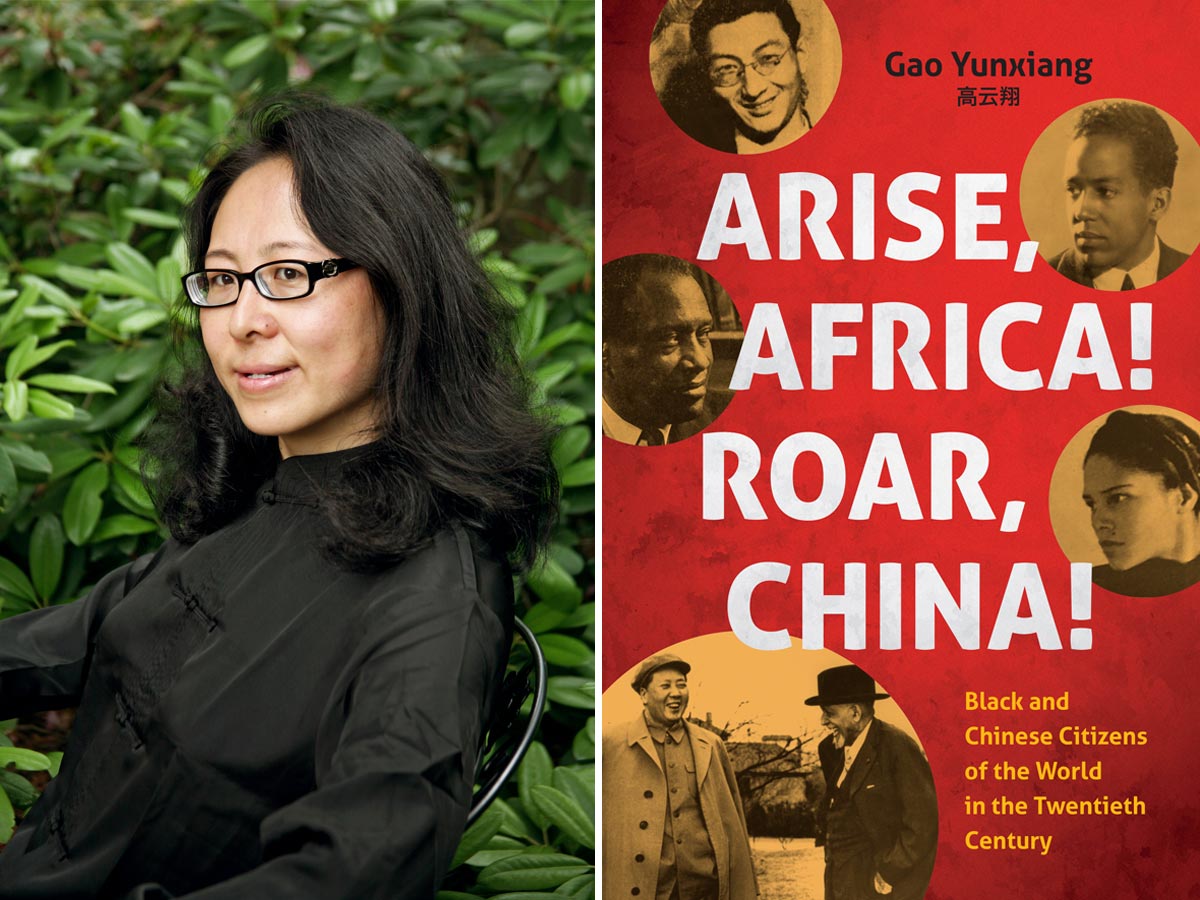Tracing relationships and alliances between Black American and Chinese activists and entertainers in the 20th century

History professor Gao Yunxiang explores the relationships between Black American activists and Chinese artists in her new book.
A headline from an old newspaper that was used to insulate the roof of history professor Gao Yunxiang’s childhood bedroom in Inner Mongolia partially inspired the research behind her new book, Arise Africa, Roar China: Black and Chinese Citizens of the World in the Twentieth Century.
By tracing the intersecting relationships of three leading Black Americans and their Chinese allies, professor Gao explores their impacts on each other and on the alliances between Maoist China and leftist, radical Blacks in the United States in the 20th century. The Americans featured in the book are W.E.B. Du Bois and Langston Hughes, who were activists and writers, and Paul Robeson, an activist and famous entertainer. The Chinese people she researched are Liu Liangmo, a Christian activist, journalist and musician, and Sino-Caribbean dancer-choreographer Sylvia Si-lan Chen.
The book is a research effort that spanned eight years and drew from multilingual archives, newspapers and even FBI files across the United States, China Great Britain and other countries. Professor Gao says that she hopes her work will help readers re-imagine Sino-American relations with Black Americans in a more prominent role and focus “on global anti-imperialism and popular movements which are still relevant today.”
“Together, the lives of these five citizens of the world stand as powerful counters to narratives that foreground racism and alienation,” she said.
Professor Gao explains that Mao Zedong, chairman of the Chinese Communist Party, was interested in developing contacts with radical Black Americans during the 1960s, presenting them as the true revolutionaries. “At the same time, Black Americans were impressed by Mao’s anti-American imperialism positions and his emphasis on violent struggles and cultural change as a revolutionary force,” she said. Professor Gao’s research into these five people offers evidence that the seeds of this mutual admiration took root earlier than historians previously thought – in part because of these individuals’ relationships and actions.
These relationships took a variety of different forms. For instance, Robeson and Liu met and worked together musically, with Robeson helping to popularize the song “Chee Lai” (March of the Volunteers) in the United States in the early 1940s. The song eventually became the anthem of the People’s Republic of China in 1949. Hughes was the first Black intellectual of renown to go to China in 1933 and helped change perceptions of Black stereotypes in that country.
The inspirations for professor Gao’s research arose from a range of sources and experiences, including her childhood in Inner Mongolia. Laudatory articles about Du Bois that she encountered in Communist Chinese press while researching her first book led her to learning about Robeson, Liu and Chen, but memories of the home she grew up in also contributed. In her bedroom, the ceiling was wood board pasted over with old newspapers for insulation. And above her bed was the headline of a 1968 article, a title she read daily for a year before another layer of newspaper was added, memorizing it so she still recalls it today: “Robert Williams and Madam Du Bois Fervently Acclaim Chairman Mao’s Statement Supporting American Blacks’ Anti-Brutality Struggle.”
“These figures’ endeavours across racial, national, cultural and linguistic boundaries illustrate that the world always remains connected despite political, legal, immigration and diplomatic hurdles,” said professor Gao.